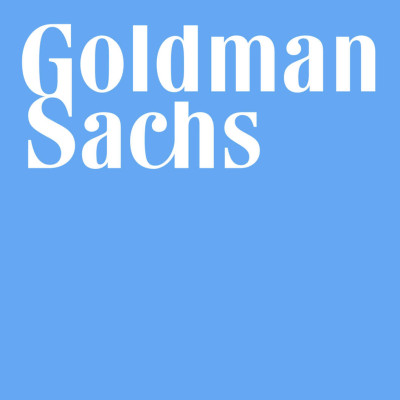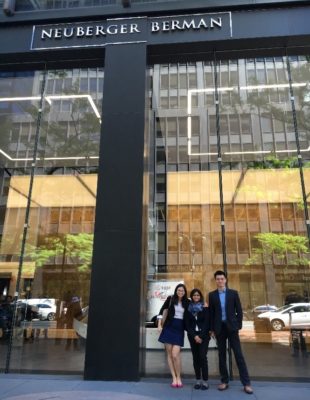Friday, May 19 marked the fifth and final day of our stay in New York City. We first went to Goldman Sachs and had a great time with the speakers from risk management department. The first speaker has worked at Goldman Sachs for three decades and also happens to be a graduate of WashU’s School of Engineering. He shared his career path with us and how he finally found his passion for risk management. The best advice he gave us is to keep learning specific skills in school and thinking about how to apply our knowledge to work. Even though the practical world is different than the theoretical world, the knowledge we learn in school is the foundation of our future work, and when technologies change fast, the foundation does not change. Also, when asked for advice about interviewing, he emphasized the importance of being honest about what you know and what you don’t know, and showing your willingness to learn.
 Next, two younger analysts from the risk management office had a Q&A time with us. One of them just joined the team last year, so she had many recent experiences that we were curious about. Many students asked questions about how to prepare for the interviews and what kind of skills Goldman Sachs required. They also talked about the normal day-to-day work and the training program that Goldman Sachs provides.
Next, two younger analysts from the risk management office had a Q&A time with us. One of them just joined the team last year, so she had many recent experiences that we were curious about. Many students asked questions about how to prepare for the interviews and what kind of skills Goldman Sachs required. They also talked about the normal day-to-day work and the training program that Goldman Sachs provides.
In the afternoon, we headed to another asset management heavyweight on the street, Neuberger Berman, one of the largest independent, employee-owned investment management firms.
After stepping into the fantastic meeting room, holding a nice drink, and enjoying a magnificent bird’s eye view of the New York skyline and Central Park, we understood the reason that Neuberger Berman is consistently ranked as the company with highest employee satisfaction.
 Three senior VP-level speakers shared with us great lessons from their areas of expertise. The head of strategy shared his investment thesis in frontier markets, equity markets, and commodity markets. He also shared his idea of opportunities on investing in fundamentals globally and the trend of macro economics. He frequently discusses these topics with extremely high ranking officials, such as finance ministers of foreign nations.
Three senior VP-level speakers shared with us great lessons from their areas of expertise. The head of strategy shared his investment thesis in frontier markets, equity markets, and commodity markets. He also shared his idea of opportunities on investing in fundamentals globally and the trend of macro economics. He frequently discusses these topics with extremely high ranking officials, such as finance ministers of foreign nations.
The head of municipal bonds shared impressive knowledge on municipal bond pricing, valuation, trading strategy, and wisely linked back to dynamics of US municipality financial operation and the challenges and risks they face. Real case studies on Puerto Rico and Detroit gave international students great exposure to the current US public finance system.
The head of corporate finance explained his strategy in dealing with the global corporate system of Neuberger in tax planning, corporate governing, structure optimization, and company controlling. He shared his personal story and career path, which was very interesting for students like us who want to be a CFO of a leading financial institute with a global footprint.

We concluded our New York immersion course with a guided tour of Wall Street. Our guide was a welcoming gentleman, who used to work as a trader in the New York Stock Exchange. While we were walking along the street, we got to know the history of Wall Street, the market, and its participants. We also visited all the famous buildings on the street and heard great stories from years gone by.
The tour ended at the new World Trade Center (pcitured at left), which stands across from the 9/11 monument. While fascinated by the new tower’s beauty, we began to ruminate on the value of peace for society.
Guest Bloggers: Sihao (Henry) Feng, Ye Qu, Yilin Wu, Jiaqi (Jack) Yang (GMF 2017)
This is a series of blogs chronicling the experiences of 42 Global Master of Finance (GMF) dual degree students during their two week immersion course in New York and Washington, DC. Each blog will be written by a small subset of students during their experience. Names of speakers and presenters at firms are anonymous at the request of the firms and course organizers.






